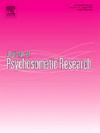The impact of photovoice on the report of emotions in individuals with persistent physical symptoms: Results of an experimental trial
IF 3.5
2区 医学
Q2 PSYCHIATRY
引用次数: 0
Abstract
Objective
Identifying and reporting emotions can be challenging for individuals with persistent physical symptoms (PPS), like tinnitus or tension-type headaches. Photovoice (PV) helps people identify and report their emotions by photographing relevant objects or situations. The aim of our study was to examine whether PV facilitates the report of emotions in individuals with PPS.
Methods
We randomly assigned 169 participants with PPS to one of three groups: a PV group, a writing group, or a passive control group. The PV group took daily photographs related to their symptoms and coping, the writing group wrote keywords, and the passive control group had no task. After a week, all participants completed an online writing task about their symptoms and coping, which was analyzed for the number of emotion words used. We also assessed self-reported affect, ability to identify and report emotions, and self-disclosure.
Results
Participants in the PV group used more emotion words in the writing task than the control groups. Specifically, the PV group used significantly more positive emotion words (F(2,166) = 26.86, p < .001) and fewer negative emotion words (F(2,166) = 8.28, p < .001) compared to the writing and control groups. No significant group differences were found for self-reported affect and self-disclosure.
Conclusions
PV promises to facilitate more positive, nuanced, and detailed reporting of emotions and may be therapeutically useful in gathering richer insights from the participant's perspective. Future research should target individuals who respond best to PV and develop tailored treatment to increase treatment effects.
光声对持续身体症状个体情绪报告的影响:一项实验试验的结果
对于有持续性身体症状(PPS)的人来说,识别和报告情绪是一项挑战,比如耳鸣或紧张性头痛。Photovoice (PV)通过拍摄相关物体或情况,帮助人们识别和报告自己的情绪。我们研究的目的是检查PV是否促进了PPS患者的情绪报告。方法将169名PPS患者随机分为三组:PV组、写作组和被动对照组。PV组每天拍摄与症状和应对相关的照片,写作组写关键词,被动对照组无任务。一周后,所有参与者都完成了一项关于他们的症状和应对的在线写作任务,并分析了使用情感词汇的数量。我们还评估了自我报告的情绪、识别和报告情绪的能力以及自我表露。结果PV组在写作任务中使用的情感词汇比对照组多。具体而言,PV组使用的积极情绪词汇显著增加(F(2166) = 26.86, p <;.001),负性情绪词较少(F(2166) = 8.28, p <;.001)与写作组和对照组相比。自我报告的情感和自我表露没有显著的组间差异。spv有望促进更积极、细致和详细的情绪报告,并可能在治疗上有用,从参与者的角度收集更丰富的见解。未来的研究应该针对对PV反应最好的个体,并开发量身定制的治疗方法来提高治疗效果。
本文章由计算机程序翻译,如有差异,请以英文原文为准。
求助全文
约1分钟内获得全文
求助全文
来源期刊
CiteScore
7.40
自引率
6.40%
发文量
314
审稿时长
6.2 weeks
期刊介绍:
The Journal of Psychosomatic Research is a multidisciplinary research journal covering all aspects of the relationships between psychology and medicine. The scope is broad and ranges from basic human biological and psychological research to evaluations of treatment and services. Papers will normally be concerned with illness or patients rather than studies of healthy populations. Studies concerning special populations, such as the elderly and children and adolescents, are welcome. In addition to peer-reviewed original papers, the journal publishes editorials, reviews, and other papers related to the journal''s aims.

 求助内容:
求助内容: 应助结果提醒方式:
应助结果提醒方式:


